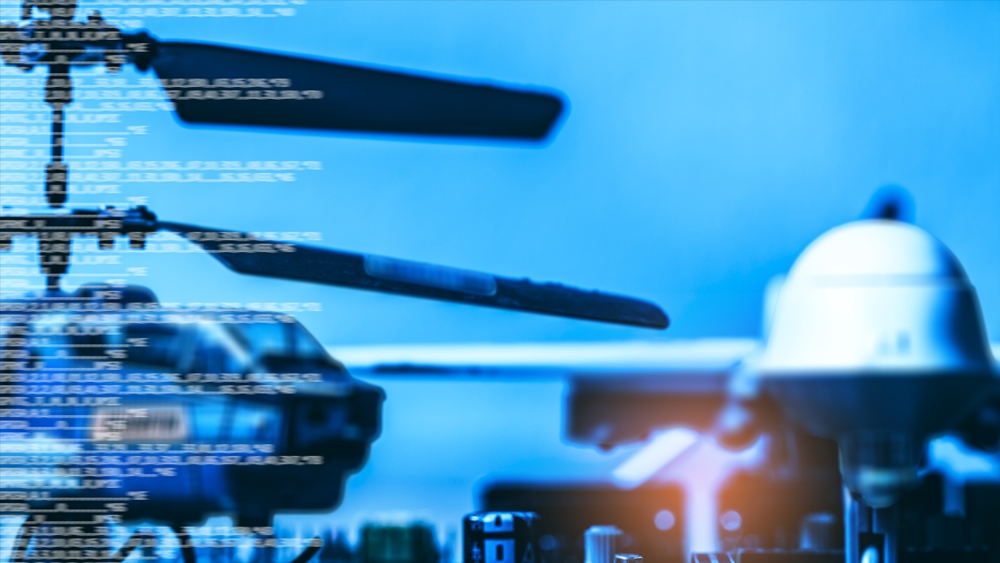Meeting demand for UAV engineers
 According to the Government’s recent consultation response Unlocking the UK's High-Tech Economy: Consultation on the Safe Use of Drones in the UK, Goldman Sachs predicted that the global spend on drones in construction, agriculture insurance and infrastructure inspection between 2016 and 2020 would be almost $20 billion. This would be matched by predicted retail and consumer global sales in 2020 of 7.8 million drones, totalling around $3.3 billion.
According to the Government’s recent consultation response Unlocking the UK's High-Tech Economy: Consultation on the Safe Use of Drones in the UK, Goldman Sachs predicted that the global spend on drones in construction, agriculture insurance and infrastructure inspection between 2016 and 2020 would be almost $20 billion. This would be matched by predicted retail and consumer global sales in 2020 of 7.8 million drones, totalling around $3.3 billion.
In the 2016 report Clarity from Above, PwC estimates that the global drone application market would be worth more than £120 billion by 2025. Large-scale capital projects, infrastructure maintenance and agriculture will account for more than half of the predicted market, as the technology enables easier and safer accessibility, big data capability and delivers process improvements across a range of commercial applications and industries.
While a substantial amount of investment in UAV technology has been for military applications, BI Intelligence predicts that most growth in the UAV industry will be on the civilian side, with an expected compound growth rate of 19% between 2015 and 2020 compared with 5% growth on the military side.
With more than £250 million components being exported by the UK in 2015 for the rapidly expanding global UAV market, it is not surprising that this emerging technology represents an exciting opportunity for ex-military engineers with related skill-sets.
Commercial application of UAV
A pioneer in the sector, the UK has a number of specialist companies working in the UAV industry across the full spectrum of applications. As a recruitment consultancy that specialises in engineering and manufacturing, we have seen a rapid rise in the global market for UAVs being matched by demand for specialist engineers to design, develop and maintain fleets.
One of the key drivers in commercial markets adopting UAV is safety, to remove pilots from hazardous situations, however, they are proving valuable in an increasingly diverse range of applications.
Traditionally used in the military, it is not surprising that the commercial sector sees ex-military personnel as a natural fit for emerging civilian roles. The requirement for UAV specialist skill-sets is set to intensify as UAV penetrates new applications and markets.
From planning search and rescue missions in isolated geographical and remote locations through to everyday applications, UAV technology is being adopted to an array of industries. Applications include defence and border control, recording and monitoring coastal erosion, analysing geographical changes, planning flood defences, supporting inspection to predicting maintenance programmes in agriculture, forestry, construction, energy and transport infrastructure.
From fixed wing, rotary blade and hybrid systems, through to sophisticated imaging and data gathering, UAVs are being developed to adapt to a wide range of practical applications. These include specific tasks such as crop spraying, 3D scanning of bridges and structures or even helping to identify and tackle forest fires.
Specialist skills
While there will naturally be a crossover of skills for military UAV trained pilots, the skill-sets in demand will go well beyond piloting the craft, with career opportunities that parallel any aircraft. This particularly offers rich pickings for military trained mechanical engineers, avionic engineers, electrical engineers and project chiefs.
In fact, opportunities will be available for anyone that can bring field-based military experience of remote piloting, sensor operation, data analysis, image analysis, maintenance, modification and operational support.
Demand for power and propulsion systems, navigation systems, batteries, controllers and cameras experts will also increase as regulation and competition in the sector intensifies and UAV applications evolve.
Developing UAV technology requires technical experience and qualifications in areas such as aeronautical engineering, electronics, robotics and mechanical engineering. Commercial roles in terms of sales for both suppliers and manufacturers are also in growing demand.
As the market matures there will be increasing demand for maintenance and repair roles and people with the capability to customise units or to perform specific industry-related tasks.
UAV careers are poised for take off
According the MoD’s official provider of Armed Forces Resettlement, The Career Transition Partnership, more than 14,000 skilled and experienced individuals leave the armed forces each year.
With roles ranging from maintenance technicians, pilots, operators, design engineers, systems engineers and software engineers, the industry is particularly keen to recruit professionals with operational experience in hazardous environments or anyone from a military or defence environment that has the life experience and skill-sets needed for these demanding roles.
We see engineering skills in demand across the board but the UAV sector is particularly well-suited to ex-forces personnel as they are well versed in the safety aspects of the available roles.
For the many HM Forces engineers entering civilian life and indeed, anyone with an aerospace engineering background with an emphasis on technical compliance and safety, prospects in the UAV sector have never been better.












